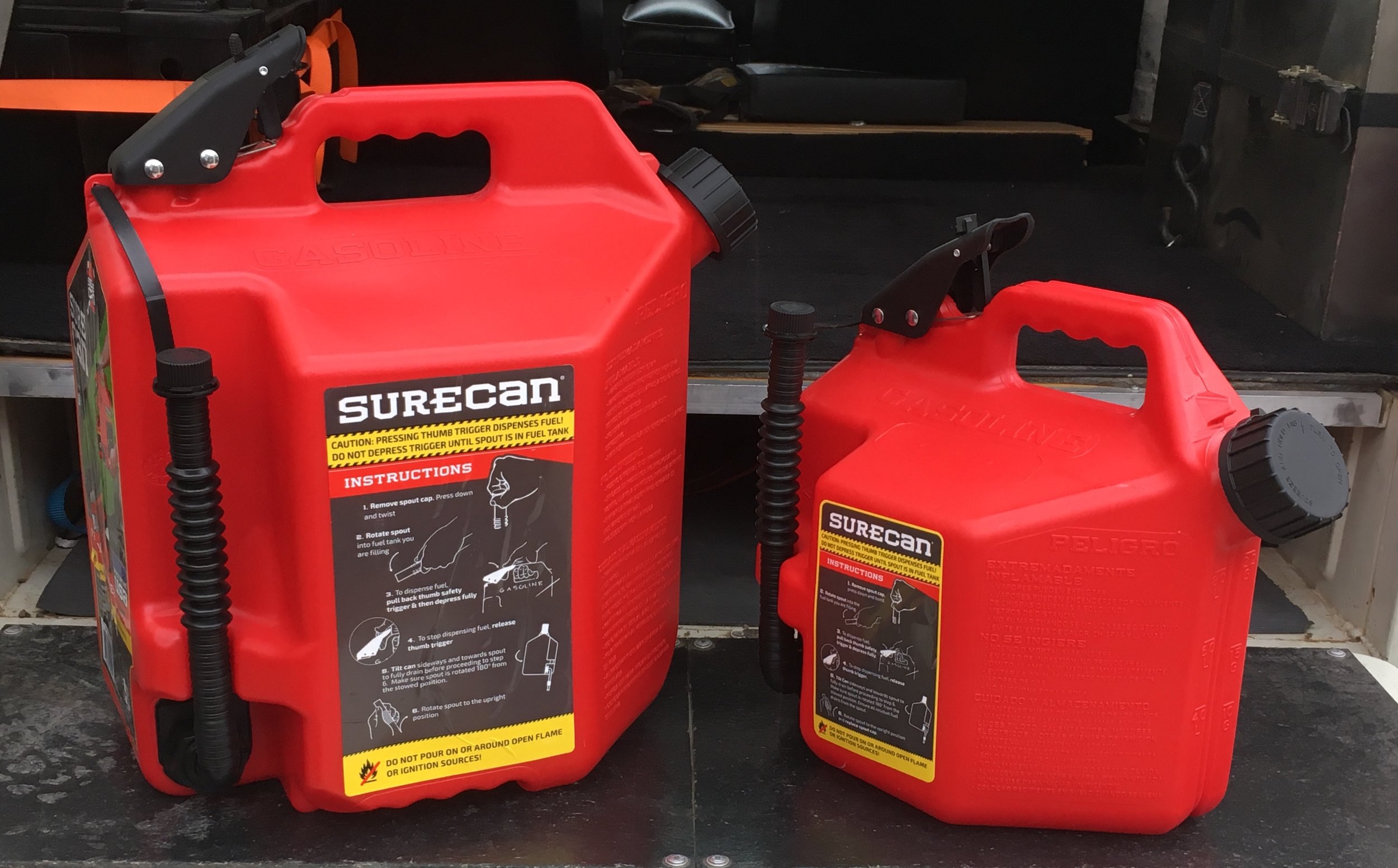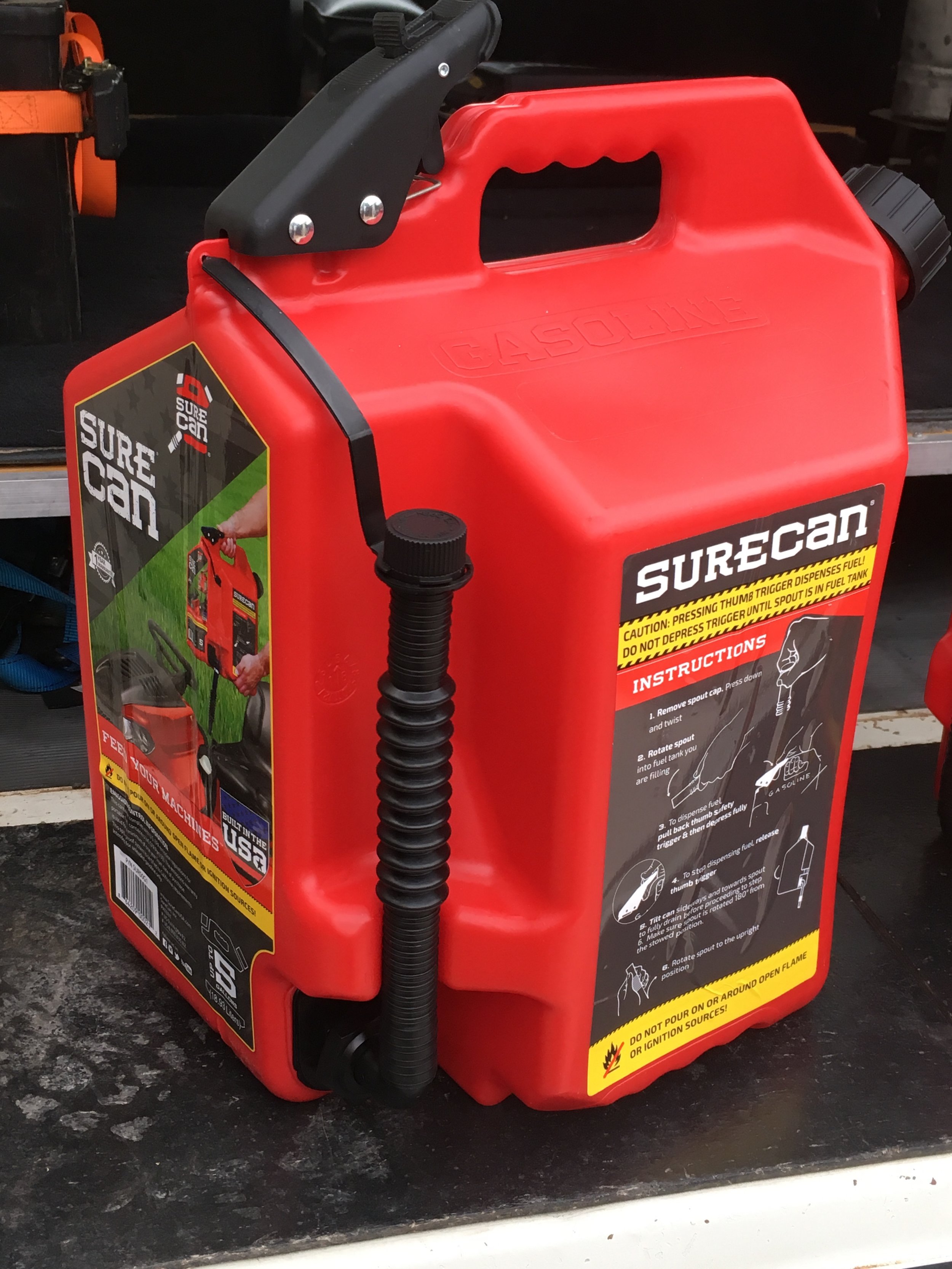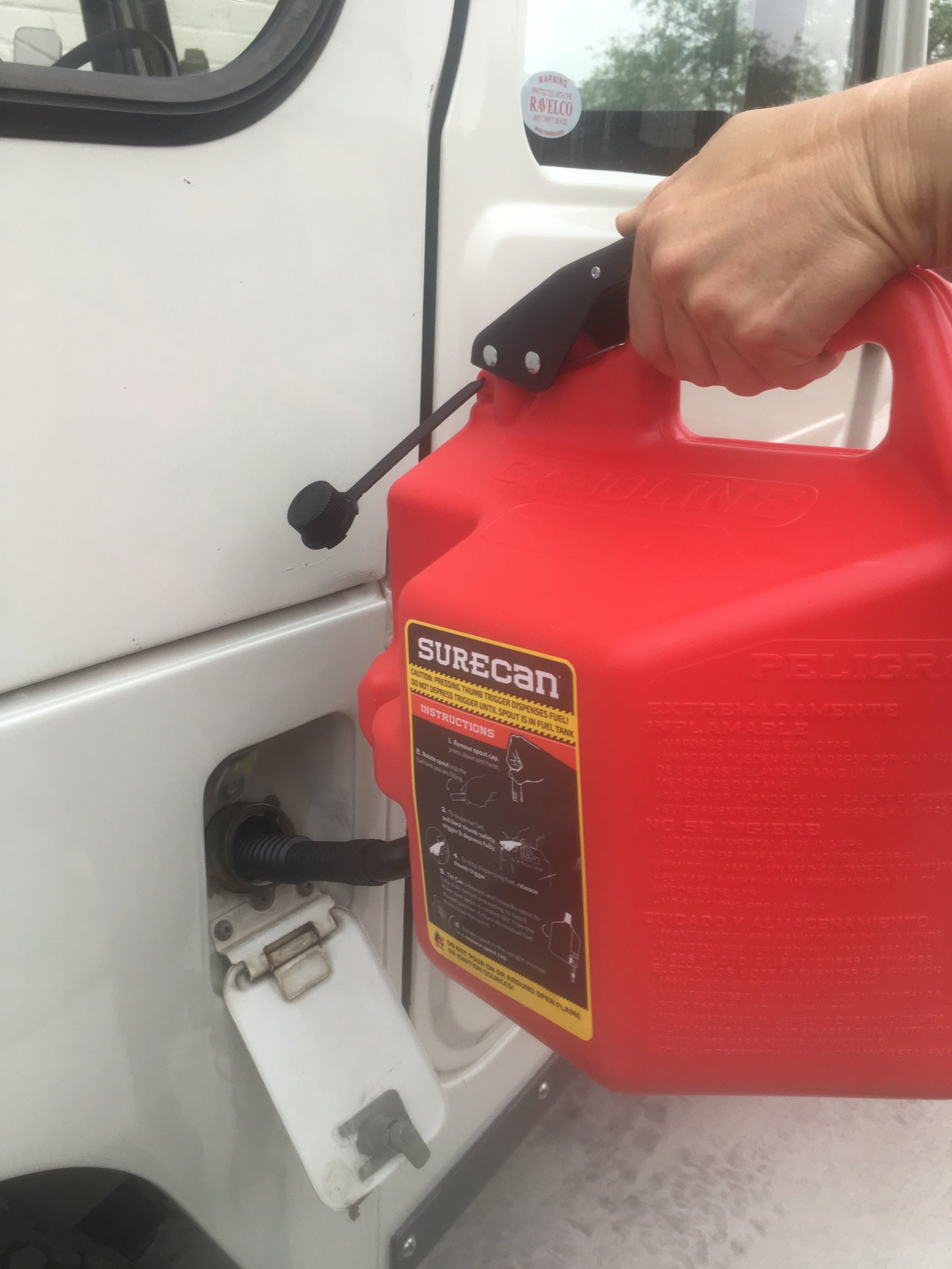A new fuel can
Carrying extra fuel, whether for the vehicle or an accessory such a a generator or chainsaw, always requires balancing different requirements. First and most critical is absolutely leakproof storage. Next comes ease of handling, and the speed with which the fuel can be dispensed. Then there must be a way to secure the container so that it will not shift even in the event of a traffic accident or rollover on a trail.
The gold standard as far as I'm concerned—despite its origins in 1937—is still the classic steel NATO-style (ex-Wehrmacht) jerry can, with the original cammed lid. I've found them to be absolutely leakproof, even when stored on their sides in full summer sun. The clamp-on spout incorporates a breather that makes dispensing a very fast process—convenient now but essential when your Kubelwagen was about to be strafed by a Spitfire. Even without the spout attached, dispensing fuel into a funnel is easy thanks to a built-in lip. I have a pair of NATO cans on my FJ40 that I bought at least 15 years ago—and they were surplus then. I've replaced the cap gaskets once; they still function perfectly.
When the U.S. reverse-engineered the Wehrmacht can in WWII to produce the so-called Blitz can, we sadly cut corners. Rather than perimeter-welding the seam, we used a crimped bottom and side seam, and replaced the brilliant cammed lid with a screw-on lid that was too large in diameter, making it virtually impossible to tighten enough to prevent seepage. I've never owned a Blitz can that didn't seep at the crimped base and leak at the lid. Pouring fuel from a Blitz can without a spout is an exercise in annoyance as there is no lip whatsoever and fuel cascades down the can and all over one's boots.
Likewise, my experience with the current plastic U.S. Scepter can has been disappointing, for the same reason: The large-diameter screw-on lid does not develop sufficient clamping force. As proof look at the several styles of double-handed wrenches available to augment one's own muscle power when installing or removing the lid. Not needed with the NATO can's cammed lid.
Of course, to dispense fuel from any of the above three styles of fuel container, you must tip them. And that brings us to the two new containers—one 2.2 gallon, one five-gallon—just sent to me from SureCan.
The SureCan incorporates a clever system that makes dispensing fuel something you could do while wearing your dress Afrika Korps uniform. Unscrew the cap from the built-in spout, then rotate the spout downward and insert it into whatever needs fuel. Press the safety catch on the top lever, squeeze the lever, and voila—fuel dispenses at a very rapid pace thanks to a breather mechanism built in to the valve assembly. Let go the lever and the fuel stops, right now. Tip the can sideways a bit to get the last few drops out of the spout, tip it back up to its locked position and secure the cap, and you're finished.
I used the SureCan to fill our generator when I needed to do some welding, and the process was absurdly easy and fast. Dispensing into a vehicle was more difficult, as you need to raise the can above the level of the filler. However, it was still easier than lifting and tipping a standard container.
I don't yet know if the SureCan will function well as an expeditionary fuel container. While it's easy to strap down securely through the handle, it does not fit into a standard can carrier on a rear rack. Also—and this is the big question—I don't yet know if the can will remain tight and leakproof when filled and carried where it will be exposed to high temperatures, full sun, and rough roads. The mechanism is much more complex than a simple lid, and there are more openings, including at the lever and the joint where the spout connects to the can, where leakage or outgassing might occur. I'll report back after trying it.
What I will say is that the SureCan has become my go-to container for around-the-ranch use for filling generators, chainsaws, and the like. A lot of new products seem too clever for their own good, but the SureCan is just clever enough to work.
SureCan is here.



